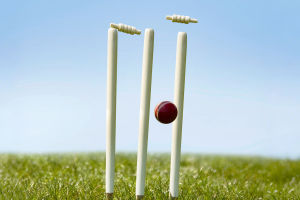A soccer field might look like just a big grassy rectangle, but there’s a lot more to it than meets the eye. From precise measurements to specific markings, every detail follows a set of standards.
Curious about what makes a field truly official? Let’s break it down together and uncover the secrets behind the perfect pitch!
Standard Size of the Field
First things first—how big should a soccer field be? For regular games, the field must be rectangular, with the touchline (the longer side) always longer than the goal line (the shorter side). The usual size ranges from 90 to 120 meters in length and 45 to 90 meters in width.
For international matches, it’s even more specific: 100–110 meters long and 64–75 meters wide. And when it comes to the World Cup, the official size is exactly 105 meters by 68 meters. Pretty strict, right?
Lines and Markings—More Than Just Paint
The field is divided with clear white lines that are no wider than 12 cm (about 5 inches). These lines aren’t just for looks—they define different parts of the field. The two longer lines are called the touchlines, and the two shorter ones are the goal lines. A halfway line splits the field into two halves, and right in the middle is a center mark, surrounded by a circle with a radius of 9.15 meters.
Each corner of the field has a flagpole that’s at least 1.5 meters tall with a small flag attached. These aren’t just decorative—they’re part of the rules too!
The Goal Area—Where All the Action Happens
Every field has a goal area, also called the six-yard box. It’s made by drawing two lines, each 5.5 meters from the inside of the goalposts and extending 5.5 meters into the field, connected by a line parallel to the goal line. This space is where the goalkeeper operates and where goal kicks happen.
Penalty Area—High Pressure Zone
This is the famous box where penalty kicks take place. It’s formed by drawing lines 16.5 meters from each goalpost and 16.5 meters into the field, creating a large rectangle. There’s a penalty spot exactly 11 meters from the center of the goal, and a small arc on the outside of the box to mark where other players must stand during a penalty kick.
Corner Area—Where Comebacks Begin
Around each flagpost, there's a quarter-circle with a radius of 1 meter—this is the corner area. This is where corner kicks are taken and where thrilling goals often start.
The Goal—Not Just Any Net
Each goal is placed in the center of the goal line and consists of two vertical posts 7.32 meters apart, connected by a horizontal crossbar that stands 2.44 meters above the ground. All parts must be white and the same width—no funky designs allowed here! The net must be secured but shouldn’t interfere with the goalkeeper's play.
Game Ball Standards
The official ball has strict requirements too. It must be round and made of leather or approved materials. It should be 68–70 cm in circumference, weigh 410–450 grams, and have a pressure of 0.6 to 1.1 atmospheres. Damaged balls are swapped out, but only with the referee’s approval.
Number of Players—Teamwork Rules
Each team can have up to 11 players, including a goalkeeper. The game can’t start if either side has fewer than 7 players. In official matches, up to 3 substitutes can be used, while other matches might allow up to 5 or more, depending on the agreement.
Substitutions must follow proper steps: notify the referee, enter at midfield during a stoppage, and only after the substituted player leaves. Fun fact: players can switch places with the goalkeeper, but only with the ref’s okay and during a break.
Player Equipment—Safety Comes First
All players must wear proper gear, including a jersey, shorts, shin guards (covered by socks), and cleats. Goalkeepers must wear a different color than everyone else. If someone’s gear is unsafe, the referee can send them off the field until it's fixed.
The Referee—The Final Word
Each game is controlled by one main referee. They enforce the rules, check players’ gear, monitor time, and decide when to stop or resume the match. If the crossbar is broken or something outside interferes with the game, they can even call it off.
Why It All Matters
Every detail we’ve explored—from the size of the field to the color of the goalposts—ensures that soccer remains fair, exciting, and safe. Next time we watch or play a match, we can spot these features and understand why they matter so much.
So Lykkers, did anything surprise you? Which part did you not know before? Let us know—we’d love to hear your thoughts and keep the conversation going!
HOW TO CHOOSE POSITION - where should you play?
Video by Unisport


